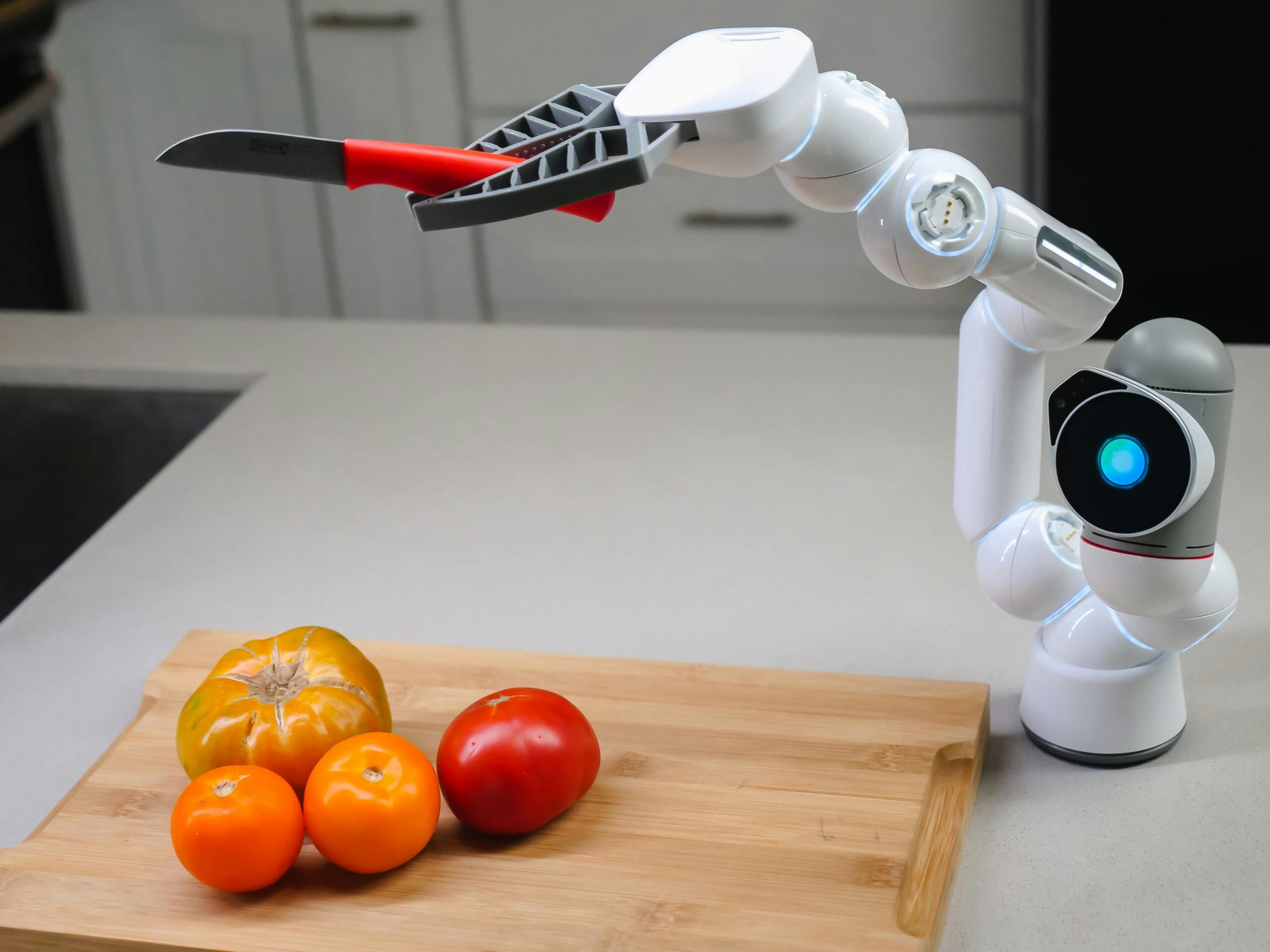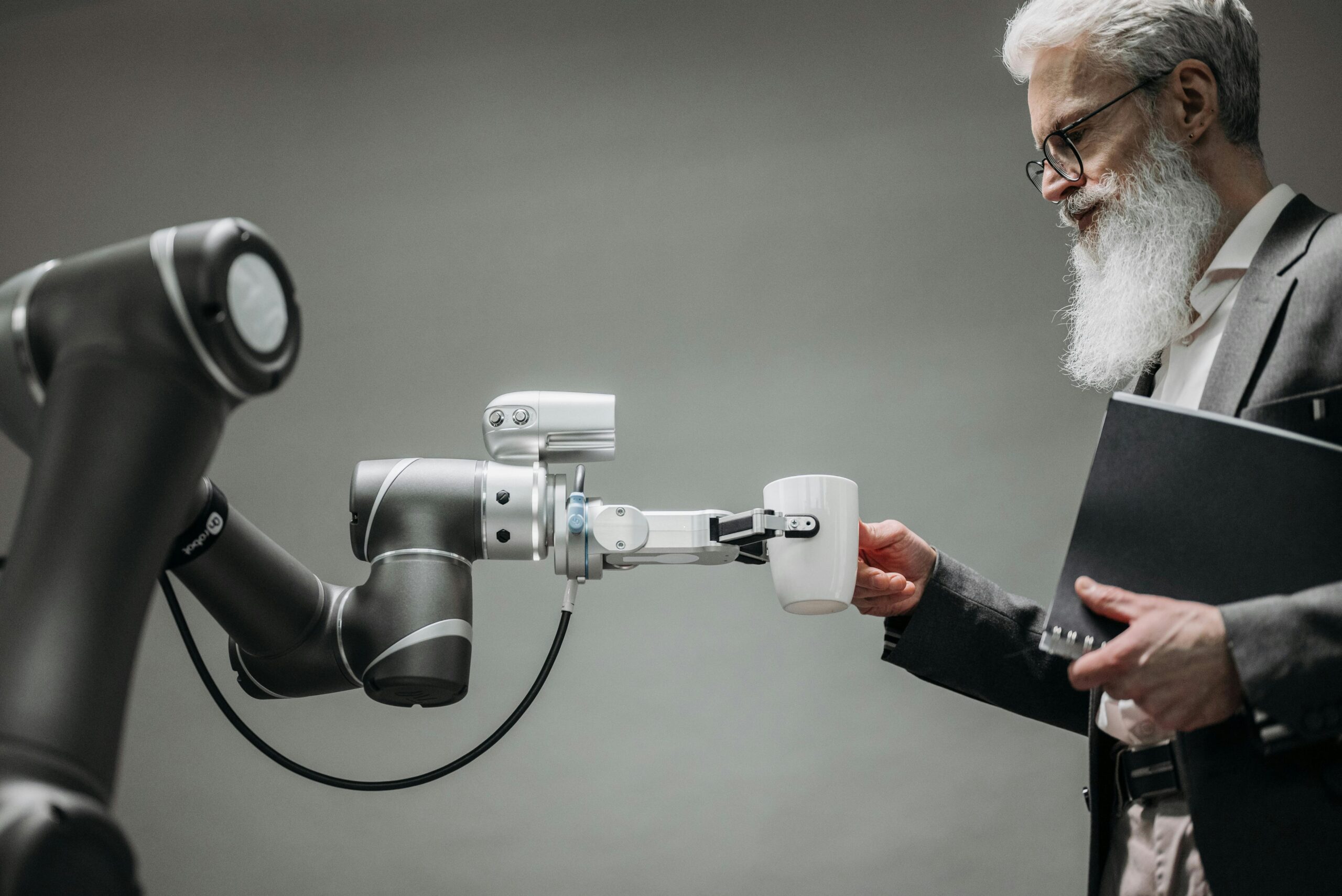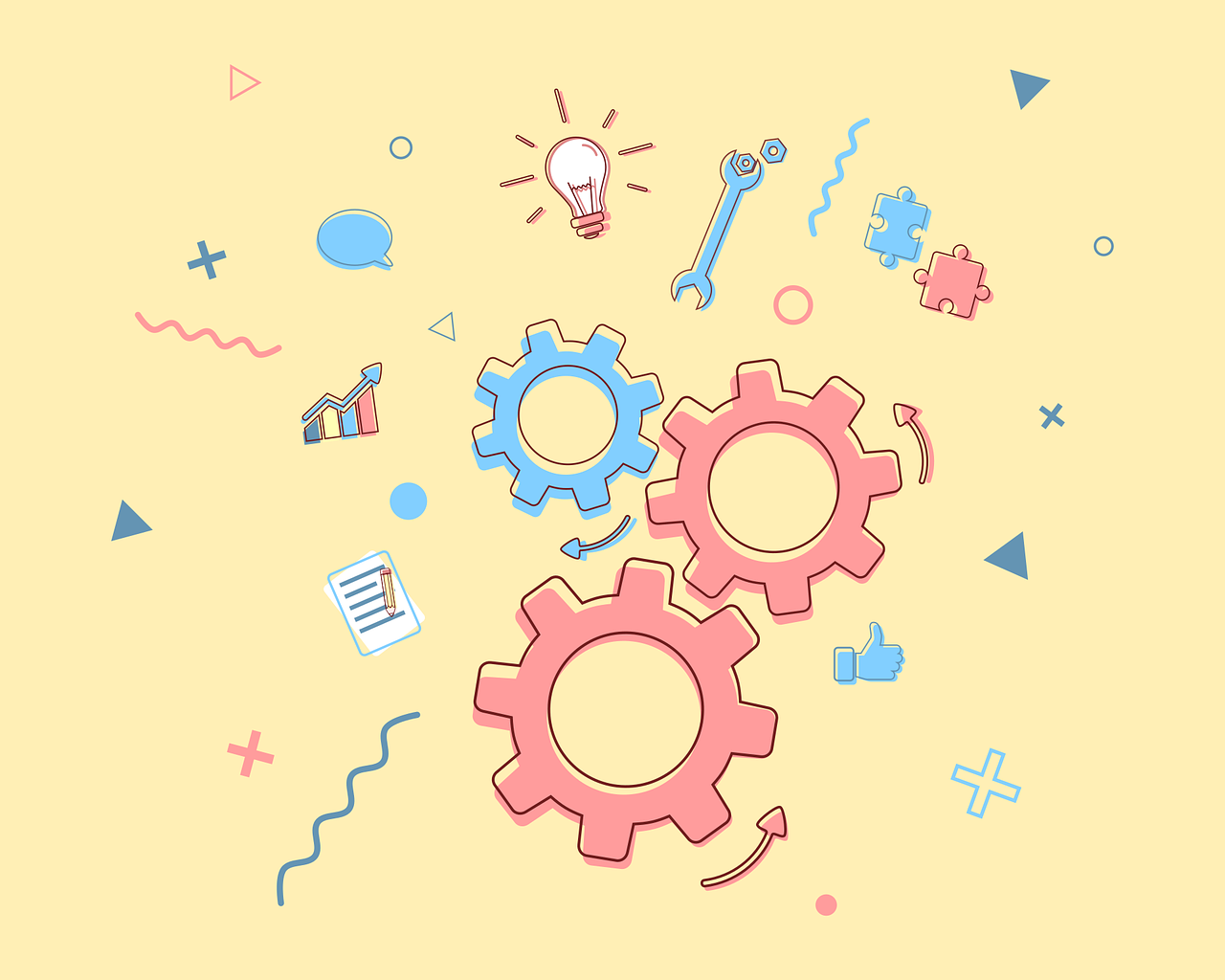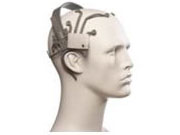Burning Questions
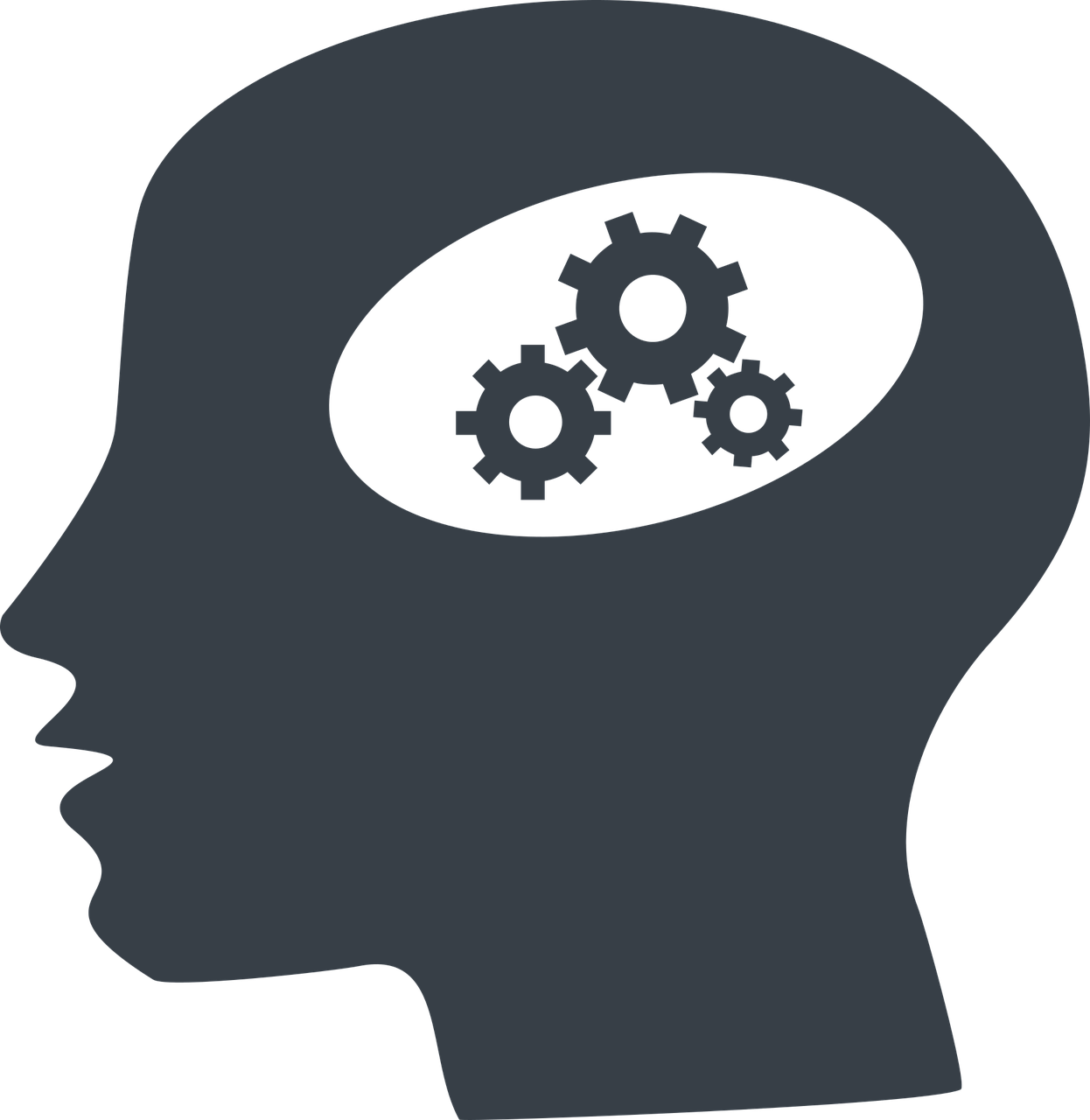
Apr
AI’s Impact On Critical Thinking and Learning – What Studies Are Saying So Far
jerry9789 0 comments artificial intelligence, Burning Questions
Generative AI and Critical Thinking
On our last blog, we touched on two studies suggesting that Generative AI is making us dumber. One of those studies, which was published in the journal Societies, aimed to look deeper into GenAI’s impact on our critical thinking by surveying and interviewing over 600 UK participants of varying age groups and academic backgrounds. The study found “a significant negative correlation between frequent AI tool usage and critical thinking abilities, mediated by increased cognitive offloading.”
Cognitive offloading refers to the utilization of external tools and processes to simplify tasks or optimize productivity. Cognitive offloading has always raised concerns over the perceived decline of certain skills — in this instance, the dulling of one’s critical thinking. In fact, the study found that cognitive offloading was worse with younger participants who demonstrated higher reliance on AI tools and less aptitude when it comes to their own critical thinking skills.
Conversely, participants with higher educational backgrounds showed better command of their critical thinking no matter the degree of AI usage, putting more confidence in their own mental acuity than the AI-based outputs. Aligning with our advocacy for the “appropriate use of AI,” the study emphasizes the importance and appreciation of high-level human thinking over thoughtless and unmitigated adoption of AI technology.
Copyright: jambulboy
Generative AI and Learning
In truth, a number of earlier studies have revealed that the arbitrary adoption of AI tools can be detrimental to one’s ability to learn or develop new skills. A 2024 Wharton study on the impact of OpenAI’s GPT-4 demonstrated that unmitigated deployment of GenAI fostered overreliance on the technology as a “crutch” and led to poor performance when such tools are taken away. The field experiment involved 1,000 high school math students who, following a math lesson, were asked to solve a practice test. They were divided into three groups, with two of these groups having access to ChatGPT while the third had only their class notes. One group of students with ChatGPT performed 48 percent better than those without; however, a follow-up exam without the aid of any laptop or books saw the same students scoring worse by 17 percent than their peers who had only their notes.
What about the second group with the GenAI tutor? They not only performed 127 percent higher than the group without ChatGPT access on the first exam, but they also scored close to the latter during the follow-up exam. The difference? Sometime down the line of their interactions, the first group with ChatGPT access would prompt their AI tutor to divulge the answers, resulting in an increased reliance on GenAI to provide the solutions instead of making use of their own problem-solving abilities. On the other hand, the other group’s AI tutor version was customized to be closer to how real-world and highly effective tutors would interact with students: it would help by giving hints and providing feedback on the learner’s performance, but it would never directly give the answer.
Similar tests with a GenAI tutor in 2023 studied the same issue of AI dependence and the value of careful deployment of AI tools. Khanmigo, a GenAI tutor developed by Khan Academy, was voluntarily tested by Newark elementary school teachers, who belong to the largest public school system in New Jersey. They came back with mixed results, with some complaining that the AI tutor gave away answers, even incorrect ones in some cases, while others appreciated the bot’s usefulness as a “co-teacher.”
Other studies regarding the effectiveness of AI tutors have shown increases in learning and student engagement. These studies have also shown that GenAI can help reduce the time it takes to get through learning materials compared to traditional methods. One study that extolled the benefits of GenAI tutors involved Harvard undergraduates learning physics in 2024, and similar to the third group in the Wharton research, the AI was prevented from directly providing the answer to students. It would guide the student throughout the learning process one step at a time, providing incremental updates of the student’s progress, but never outright telling them the answer. There are merits to the idea of Generative AI as a teaching assistant, but it serves students better when it is positioned to engage one’s attention and abilities rather than induce dependence on it to generate the answers.
Copyright: Only-shot
Can We Use GenAI Without Making Us Dumber?
These studies shed light on how we should approach AI solutions and development, whether the end product is being deployed in learning, productivity or other relevant applications. Beyond thoughtful planning and considerations on how AI tools would be deployed, there should be a focus on engaging the human faculties involved, with safeguards empowering man throughout the entire process instead of letting the machine take over the process wholesale. AI technology is developing rapidly, but we can keep pace and remain reasonable as long as human engagement and empowerment is kept at the core of its utilization and adoption.
Amid contemporary fears that anyone could be replaced anytime by AI, these studies highlight the importance of how vital and interconnected the human factor is to the effective deployment and development of AI tools. One could be content with the constant and consistent output AI tools generate, but progress is only possible when competent human minds are involved in the process and direction. Students can easily find answers with AI tools at their disposal, but why not advance their understanding of how solutions are formed with engaging and relatable AI-powered educational experiences? High-level human thinking grounded by values and experience can’t be replicated by machines, and perhaps there’s no better time than now to incorporate it into the heart of the AI revolution.
While AI development hopes that optimization and automation free the human mind to go after bigger and more creative pursuits, we here at Cascade Strategies simply hope that humanity emerges from all of these advancements more and not less than what it as we entered the AI revolution.
Additional Reading:
Why AI is no substitute for human teachers – Megan Morrone, Axios
AI Tutors Can Work—With the Right Guardrails – Daniel Leonard, Edutopia
Featured Image Copyright: jallen_RTR
Top Image Copyright: danymena88

Mar
Are We Getting Dumber Because of AI?
jerry9789 0 comments artificial intelligence, Burning Questions
Is Generative AI making us dumber? Two recent studies suggest so.
A study published early this year titled “AI Tools in Society: Impacts on Cognitive Offloading and the Future of Critical Thinking” showed that growing dependence on AI could lead to a decline in critical thinking. Submitted by Michael Gerlich of the SBS Swiss Business School, the study was based on surveys and interviews of 666 UK participants from different age groups and academic backgrounds. The problem is more pronounced with younger participants who demonstrated increased reliance on AI to perform routine tasks and scored lower when it comes to critical thinking than their older counterparts.
More recently, a study by Microsoft and Carnegie Mellon University shared similar findings that the more workers depended on AI for their work, the duller their critical thinking becomes. The study surveyed 319 knowledge workers who used generative AI at least once a week and examined how and when they apply AI or their critical skills when performing tasks. The more faith the participant put in genAI to produce acceptable outcome, the less they use their critical thinking skills. On the other hand, participants who have higher confidence in their abilities than that of AI’s are found to exercise their critical thinking more out of concerns over unintended and overlooked machine output.
Copyright: Tara Winstead
What is Cognitive Offloading?
Both studies are linking overreliance on AI with cognitive offloading, which is when someone utilizes external tools or processes for completing tasks, resulting in their reduced engagement with deep, reflective thinking. Yes, AI is improving efficiency and saves time and financial costs, but these studies are suggesting that it could make humans less smart over time.
However, cognitive offloading isn’t new as it existed in a variety of forms throughout time, such as using a calculator instead of performing mental mathematics or simply making a grocery list instead of memorizing all the items you need to buy. It’s no surprise then that there are questions about the merits of the studies, such as self-reporting bias or how critical thinking was measured. Forbes suggests that AI isn’t making us dumb but lazy, while another emphasizes that in order for there to be harm to one’s critical thinking abilities, one must have critical thinking to begin with.
Copyright: Pavel Danilyuk
Rethinking AI Development
Nevertheless, these studies contribute to the conversation regarding the direction of genAI development, now with the nuance of being mindful and respectful of its human users’ intelligence and faculties. Recommendations include rethinking AI designs and processes which incorporates and engages human critical thinking. They’re helping bring back focus to AI serving as a tool augmenting instead of overtaking human capabilities.
For us at Cascade Strategies, we’re glad that these studies have renewed awareness and appreciation of human intelligence and creativity. Our world could’ve easily devolved into settling for more of the same output so it pleases us to learn that more voices are becoming advocates and proponents not only of the “appropriate use of AI” but also of high level human thinking.
Featured Image Copyright: Alex Knight
Top Image Copyright: Tara Winstead

Dec
What’s Going On With Consumer Startups In The Age of AI?
jerry9789 0 comments artificial intelligence, Brandview World, Burning Questions
Enterprise Over Consumer
The dawn of the Internet era witnessed the emergence of huge consumer companies like Amazon while the advent of mobile technology had Uber and the like on the forefront. However, it appears that the tide has changed in this new age of AI with startup founders and investors appearing to favor enterprise over consumer efforts.
This observation is the school of thought on which the PitchBook article “Where are all the consumer AI startups—and why aren’t VCs funding them?” was based and written. It came from the author’s takeaway from her two-day experience attending the recent startup conference Slush in Helsinki where venture capitalists expressed high interests in AI startups as expected, but notably for B2B over B2C.
She further adds that PitchBook data has venture funding for B2B AI startups is at $16.4 billion this year while B2C is only at $7.8 billion. But with the consumer AI market estimated to be doubly larger than its enterprise counterpart by 2032, she posts the question if there is a lack of B2C startups, or if VC are simply just not funding consumer AI companies?
Copyright: fauxels
The Challenges of B2C AI
To start with, it simply seems that investors generally are not keen on consumer startups especially with the VC downturn starting in 2022. A combination of factors such as rising inflation, higher interest rates and valuation markdowns have created a harsh macroeconomic climate for B2C AI to thrive. And when stable profitability is the bottom line, investors would understandably be more attractive to the steady and predictable revenues generated by B2B AI companies over the unsustainable and erratic B2C AI business models.
Jordan Steiner, CEO and developer capital/chief strategy officer at Monadical, shared some unfavorable characteristics he noticed from B2C AI companies he noticed on a LinkedIn post. Most B2C AI ideas these days he found are easily replicable. When competitors can not only easily clone but also improve on an existing idea, this can hamstring any company’s chances from dominating the space or becoming an incumbent. And when these factors create a cycle where users chase the newest cool product and churn when the novelty wears off, it illustrates just how unsustainable B2C AI business models are, especially in this period of time when user acquisition costs are higher.
And when a business model banks more on desirability instead of addressing pain points, there is a continuous struggle to iterate and produce new features or content. This then requires a consistent and ongoing understanding of consumer trends, necessitating access to consumer data and insights that a startup might not have at the beginning and need to build over time, primarily with user acquisition. Incumbent B2C companies would most likely have heavily invested on acquiring consumer data and insights to maintain and defend their longstanding piece of the market.
So why do B2B AI investments seem the more attractive prospects then at this time? By prioritizing pain points over desirability, then selling to and maintaining long-term relationships with key industry players, B2B AI companies are able to eventually build desirability to attract more clients. B2B clients are also more likely to sign up and keep multi-year contracts and subscriptions which not only provide steady and stable revenue but also client data vital for product improvement and customization, helping not only build brand loyalty but also incumbency and low churn.
Copyright: Christina Morillo
Can A B2C AI Company Succeed?
Despite the aforementioned obstacles, there is room for a consumer AI startup to thrive. The PitchBook article suggests focusing “other spaces where big tech has less credibility, such as mental health solutions.” In the same article, Point72 Ventures managing partner Sri Chandrasekar highlights differentiation as being a key characteristic for a B2C AI company to help close investments, this uniqueness holding off attempts to be replicated while tapping into that factor of desirability that excites and engages consumers while attracting investors.
If anything else, a consumer AI startup might need to bootstrap it more than just having an idea to attract investments. Demonstrating and executing on your unique position not only proves your idea as sound and feasible but you are able to get your B2C AI company past the first step towards progressing to the potentially higher rewards offered in this space.
Featured Image Copyright: Pavel Danilyuk
Top Image Copyright: Photo By Kaboompics.com/Karolina Grabowska

Nov
The Children of Millenials: Getting Your Brand Ready For Gen Alpha
jerry9789 0 comments Brand Surveys and Testing, Brandview World, Burning Questions
You’ve done your high-quality segmentation study and persona development, considered single-segment focus and/or multi-segment strategies, crafted buyers’ journeys with psychographic segmentation. Your marketing plans form a playbook catering to a multi-generational audience of baby boomers, Gen X, Gen Y (Millenials) or Gen Z, but have you made room for Gen Alpha?
Who Are Gen Alpha?
Gen Alpha refers to the generation born between 2010 and 2025. Between 2.5 million and 2.8 million of this demographic cohort are being born each week around the world. Once 2024 is up, the first generation born and raised in the twenty-first century would’ve exceeded 2 billion worldwide, and they’re expected to outnumber baby boomers by 2025. Also known as “millenials’ children,” Gen Alpha is projected to be the largest and most diverse generation yet.
True digital natives, Gen Alpha grew up accustomed to smart devices and social media. This was reinforced further when the pandemic caused the whole world to stay indoors and turn to digital devices to connect, find entertainment and for virtual learning. It’s no surprise then that they exhibit comfort and quick adaptability with new technologies like artificial intelligence (AI), augmented reality (AR) and virtual reality (VR). Now while the digital world is a constant in their lives, Gen Alpha actually takes time offline and away from tech go outside and engage with friends or physical activities in tandem with caring for their mental health, a practice that became increasingly noticeable after the pandemic.
And it’s not only their mental well-being that Gen Alpha are concerned for. They’re also socially and environmentally conscious, growing up hearing and learning about inclusivity and climate change. They thus have a higher preference for products, brands and practices that promote equality, social responsibility, eco-friendliness, and sustainability when compared to previous generations. They’re also more appreciative of diversity due to globalization and digital connectivity exposing them to different cultures and perspectives.
Video-centric YouTube and TikTok are their favorite digital platforms. They’re also inclined to thrive in the safe and niche confines of gaming over contributing to the noisy and oftentimes chaotic discourse found in most social media. More than just the satisfaction of playing a video game, they express themselves in the customizable virtual space offered by worldbuilding games like Minecraft and Roblux. They are empowered by technology instead of dependent on it. And while they follow and take cues from influencers, they appreciate authenticity, personalization, and uniqueness, proving to be generally wary of and resistant to traditional marketing practices.
Why Market To Gen Alpha?
Gen Alpha is estimated to have an economic footprint of $5.4 billion by 2029. While that’s still a few years off, Gen Alpha has already and indirectly flexed their spending power by influencing their parents’ purchasing decisions while demonstrating at the same time a higher degree of brand awareness than older generations. They are confident with their choice of brands as it is a reflection of themselves and the values they appreciate.
The “adolescent demographic” is also challenging conventional marketing and advertising tactics, having already reshaped older or adult brand marketing. Where once there was space for “tween retail” with brands dedicated specifically for this age group and some adult clothing brands introducing specific clothing lines for tweens, mature brands for example simply expanded their size range to include their younger consumers. You’ll find Gen Alpha sharing the same brand choices or favorites with their millennial parents and Gen Z, the generation that preceded them.
With their digital affinity and offline exigencies set to shape the future of work, learning, and culture, brands would need to rework their marketing approach if they would like to attract Gen Alpha as early as now. While their older members are just entering their teens at this time, understanding how Gen Alpha thinks and behaves can help a brand adapt and lay the groundwork for their marketing endeavors as part of efforts to remain relevant and evolve with the times, especially with a generation this willful but informed when it comes to exercising choice.
How Should You Market To Gen Alpha?
Your marketing cornerstone can start with leveraging existing and emerging technology to understand and engage Gen Alpha. For starters, traditional demographics are already challenged by how diverse Gen Alpha is along with their preferences for personalization and uniqueness. Adopting AI and machine learning into your marketing strategy to analyze consumer behavior data and foresee trends can therefore help you craft a personalized and dynamic buyer experience for Gen Alpha. You can also employ AI-powered virtual assistants for personalized assistance during the shopping journey. AI can also grant your brand the flexibility to adapt to trends and feedback quickly in keeping in line with Gen Alpha’s needs for instant gratification.
Use gamification, polls or promos to enhance engagement and interactivity instead of conventional ads that Gen Alpha more often than not ignore or scroll past by. Add another layer to the shopping experience with AR and VR where virtual spaces allow them to visualize, explore and engage with products before even purchasing.
Gen Alpha is immersed in the digital world but they also seek engagement in the physical world. Offer in-store pick up options for online purchases to allow their shopping experience to extend to physical locations. Use geolocation and location-based services for sending relevant and personalized promotions and notifications, such as in-store only discounts and offers. Develop apps that not only incorporates these points but also enhances your omnichannel presence with seamless transition between online and physical shopping experiences. Don’t forget to promote and collect user-generated content as testimonials to the engaging and immersive experience your brand offers.
Some of the aforementioned technologies are still relatively new to the mainstream but learning and leveraging them as early as now allows your brand and marketing to evolve alongside them while growing and staying relevant with Gen Alpha.
Your brand would also need to increase focus on data protection and privacy, as Gen Alpha is particularly mindful of how valuable their personal information is in this era of data breaches and leaks. Brands need to be able to communicate clearly their privacy policies and demonstrate responsible data handling in addition to offering consumers control over how their personal information are use.
As mentioned before, Gen Alpha are acutely aware of social and economic issues aside from being the most diverse cohort yet. With this comes the rise of purpose-driven marketing where your brand needs to strongly communicate, commit and exemplify your mission and values, lest you be called out for virtue signaling. Gen Alpha are expecting brands these days to support and feature diversity and representation, calling out those that they perceive lack this value. Your brand would need to highlight and be transparent with your sustainable and ethical practices, including sourcing, production, packaging, and labor, while continually seeking areas for improvement and better, more modern methods to adopt.
While influencers are one of the top sources from where Gen Alpha learns and considers products to purchase, there is a shift nowadays on which personalities to follow thanks to this generation’s penchant for authenticity and shared values. Instead of considerably bigger names and one-time sponsorship, brands can consider long-term partnerships with micro-influencers and nano-influencers. Their niche following might be smaller but they are highly engaged and more connected, allowing for more organic integration of your brand messaging through collaborative content creation. As what we’ve already learned with high-quality segmentation study and persona development, your marketing goals can sometimes be better served by identifying, focusing and tailoring your campaign towards that consumer instead of a “blanket” approach with demographic data for reach with an influencer with a large following.
While this generation is still a year shy of rounding out all of its members, understanding and engaging with Gen Alpha as early as now would benefit brands looking to find a foothold into future markets. As technologies evolve and attitudes change, there might be no better time than now for brands and their messaging to organically connect, resonate and grow alongside Gen Alpha.
For further reading:
https://www.tokinomo.com/blog/gen-alpha-consumers
https://medium.com/@daisygarciathomas/marketing-and-consumer-behavior-of-generation-alpha-9492ceaf63ee
https://therobinreport.com/get-ready-for-gen-alpha-consumer-behavior-shifts/
https://hbr.org/resources/pdfs/comm/journey/TheBusinessCaseForUnderstandingGenerationAlpha.pdf
Featured Image Copyright: joedavis2
Top Image Copyright: alanajordan

Nov
“Humanizing” Market Research with AI
jerry9789 0 comments artificial intelligence, Brand Surveys and Testing, Burning Questions
The Boon and Bane of AI
The increasing and widespread utilization and demand for Artificial Intelligence have been met with both excitement and reservation. Excitement for the possibilities AI’s implementation unlocks, oftentimes steps ahead of the curve or beyond expectations; reservations not only stemming from the risks over its unethical and unchecked use, but also the ramifications for human involvement now that intelligent machines represent an optimized and economical choice for completing tasks and processes. But can there be a middle ground somewhere where AI and human engagement coexist and collaborate?
The “Humanization” of Market Research
“Capturing the Human Element in an Artificial World” by Eric Tayce (Quirk’s Marketing Research Review, Sep-Oct 2024) posits that such a midground is possible, especially in market research. An industry that’s all aware of its excessive dependence on technology to necessitate a push to “humanize” research data, it saw a dramatic shift from “data-intense tomes and clinical-sounding slide titles” to “streamlined, narrative-style reporting” focused on “the unique motivations and experiences that drive customer behaviors.” The latter “humanized” approach is able to communicate business goals while connecting and engaging on an emotional level. However, generative large language models (LLMs) cast a shadow on this “humanized” approach by offering synthetic outputs and progressive algorithms.
But combining both AI and efforts to “humanize” research can result in the whole being greater than the sum of its parts. The article shared that AI can help collect more unstructured data from survey research by employing conversational chatbots to create a natural, richer experience for the respondent. That unstructured data in turn can potentially provide more organic, more human insights with AI-powered algorithms, an undertaking that was once considered too complex or time-consuming. AI can also build multifaceted perspectives through context by linking survey records with a broad range of data sources. And in lieu of traditional static deliverables, data and insights can be presented in a vibrant and interactive narrative by an AI-powered persona.
The “Human” Element
All these interesting prospects can only be achieved when AI is tempered by high-quality human input and thoughtful implementation considerate of ethical and moral implications. Aside from AI mistakes and hallucinations existing, AI has been observed to be too helpful and excitable. Human oversight and input remain key in ensuring AI models are trained, fine-tuned and grounded with quality and relevant datasets while having enough flexibility to engage appropriately in open-ended interactions.
There’s no denying just how transformative AI is in reshaping industries today, including market research. Despite concerns of machines taking over jobs, one can look at it with the perspective of roles changing and adapting. AI with its generative and synthetic capabilities can elevate the “humanization” of market research, but to get to that point we simply can’t forget that humans are indispensable to the whole process.
Featured Image Copyright: GrumpyBeere
Top Image Copyright: Darlene Anderson

Sep
So Why Use AI For Your Small Business?
jerry9789 0 comments artificial intelligence, Brand Surveys and Testing, Burning Questions
Artificial Intelligence has actually been around for decades already but it grew past being a buzzword and into the mainstream in 2022 with the surprise popularity of OpenAI’s ChatGPT. Nowadays, it might be challenging to find someone who doesn’t have an iota of an idea of what AI is and what it does. In fact, its widespread cultural adoption belies its real impact behind the scenes where it steadily transforms and shapes businesses and industries towards a more automated and optimized direction.
Now as a small business owner, you might think that last statement doesn’t apply to you and is targeted mostly towards larger scale companies, but that is far from the truth. That last statement is just as relevant to your smaller, local-based trade as it is to any regional or global firm. In fact, 75% of small businesses have taken advantage of AI, according to the Small Business & Entrepreneurship Council. Additionally, 93% of small businesses agree that they save money and improve profitability utilizing AI solutions. We learned about these two interesting points when we attended a webinar hosted by CallRail, “Q&A: Demystifying AI for Small Businesses.”
You might have heard too that AI actually places everybody on the same playing field, and this was underscored at the webinar when they shared that small businesses have access to the same AI technology that big companies employ. At the same time, small businesses are granted a chance to achieve the same impact as their larger counterparts. Small businesses however enjoy being able to adapt or incorporate new technology and processes easier than their larger counterparts.
So how do you join the small businesses using AI to make money and grow? What are examples of AI being utilized by small businesses? Where do you start in understanding and applying AI solutions for your small business?
Artificial Intelligence and Its Subsets
Perhaps it’s best to follow suit with the webinar and include a quick look but fundamental understanding of AI and its subset. As you might know, AI technology enables machines like computer systems to simulate or emulate human intelligence and behavior by learning from training data, pattern recognition, decision-making, and problem-solving.
When that pattern recognition is taken one step further by involving huge data sets and advanced algorithms, a subset of AI called Machine Learning is developed. Aside from simulating or emulating human intelligence, Machine Learning allows computer systems to learn and adapt. However, a misstep in ML is the oversight of certain variables affecting the accuracy of the intended output.
A subset of ML called Deep Learning builds upon this limitation of overlooking variables by actually learning from these variables with historical data to generate accurate and high level outputs. DL achieves this by leveraging multiple layers of artificial neural networks for in-depth data processing and analytical tasks.
And when that high level data set is transformed into generated yet fine-tuned content like text, images, or code, we now arrive in the territory of Generative AI. This subset of DL models include the popular ChatGPT.
How Are Small Businesses Using AI?
Like any other company or industry, small businesses have started to use AI to save time by streamlining, automating and optimizing whichever aspect of their processes that they could. One example is speech-to-text where instead of listening to every call, you convert a recorded phone call into summarized text with relevant and possibly actionable information or insight. By filtering calls in this manner, you’re also able to identify which types require the utmost attention and immediate follow-up, an especially valuable feature for qualifying leads.
As they say time is gold and so in the same vein where you free time by outsourcing time-consuming and repeatable tasks to another person or agency, automating processes through AI allow you to devote the time you free up to other more advanced functions or find more opportunities that can help further improve productivity and profitability, growing your business along the way.
Will AI Replace Small Businesses?
Now adapting and utilizing AI in your small business isn’t the end-all and be-all; it won’t even be replacing you wholesale anytime since it is, after all, just another tool at one’s disposal. Embracing the hot new tech keeps you at pace with the rest of the pack, but how you stand out will still fall on your business savvy and the intrinsic, unique value you bring to the table. Whether it be for your marketing or improving processes or customer relations, AI will help you glean as many insights as possible from your business transactions, interactions, and communications, but how effective that knowledge becomes will still depend on how well you leverage it.









